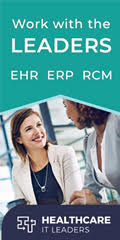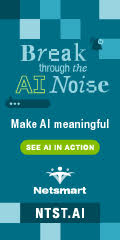Readers Write: Improving Adherence, Affordability, and Experience with Better Point-of-Care Data
Improving Adherence, Affordability, and Experience with Better Point-of-Care Data
By Christie Callahan
Christie Callahan is chief operating officer of RxRevu of Denver, CO.

As healthcare leaders continue to focus on patient outcomes, preventive care, and total wellbeing, it is essential to keep cost at the center of the discussion. Affordability and access continue to be major barriers to care, with over half of Americans saying they have received a medical bill that they did not have the funds set aside to pay for, and more than 10% of adults reporting delaying or skipping care because of financial reasons.
While there are segments of the population that are uninsured or underinsured (a separate issue to discuss), even those with insurance coverage are unable to proactively manage their healthcare costs. Lack of data and pricing information often causes consumers to forgo care altogether or become frustrated with the burdensome process of researching coverage and cost details.
There is no question that a lack of transparency causes a negative healthcare experience, and nearly everyone knows somebody who has been overwhelmed or surprised by medical bills. The challenge is that the work required to effectively diagnose and treat a potential new condition is often extensive, and the costs aren’t understood until the work has been completed.
Many new regulations and solutions center around patient price transparency. But are we approaching the problem in the right way?
Patients on their own are often incapable of making specific choices about care options without the help of a provider.
Let’s use a simple drug order as an example. Common chronic conditions require near-perfect medication adherence to manage the condition appropriately. While costs can be quite low, if the wrong medication is prescribed, or the patient fills the prescription at the wrong pharmacy, costs can quickly escalate. In this case, a new prescription must be ordered by the provider, requiring additional research by the care team, an additional visit to the pharmacy, and additional time when the patient is not on the medication.
Policies like the Hospital and Health Insurance Price Transparency Rules and the No Surprises Act mandate that plans and providers disclose negotiated rates and cost estimates over the course of the next few years. These rules allow patients, and sometimes providers, to view coverage data and have conversations around the cost of available options to improve affordability.
However, in the prescription drug space, CMS created more specific rules for EHR vendors and Medicare Part D plans, mandating the availability of real-time prescription benefit tools for providers and creating a wave of interest and acceptance of point-of-order solutions. By focusing regulation and technology capabilities on driving transparency for the patient and the provider at the point of care, together they can better manage spend and find affordable care options.
It is essential that we give providers the right tools to view a full picture of their patients and allow for condition and cost management conversations to occur. We need different-in-kind solutions that can make a meaningful difference in the exam room and help drive comprehensive conversations and decisions.
What can be done to accelerate implementation, acceptance, and use of solutions like this?
What is most important today is starting a conversation around how we can better support providers, as we continue to ask them to do more in the exam room.
First, we need better tools and data at the point of care.
- Solutions must be fully integrated into care workflows so providers can quickly and easily take action without feeling burdened by cumbersome tasks. There is often value in partnering with clinical system vendors who are instrumental in ensuring a consistent provider experience through the normalization of patient data and their ability to maximize payer coverage.
- Every patient is unique, with unique insurance coverage, financial situations, and conditions. Therefore, the data displayed within the EHR can no longer be inaccurate, incomplete, or estimated. It must be patient-specific, detailed, and displayed in real time.
- Solutions must allow for broader engagement and support from care team members. Payers and PBMs must be willing to allow access to patient data to create an open network for care providers, regardless of role.S
Second, we need to better align incentives across healthcare stakeholders.
- When patients stay healthy, payers are the primary beneficiary. There continues to be an opportunity to shift that value to providers, as they are best equipped and have the most responsibility to impact patient outcomes. Price transparency tools, in particular, can help care teams better manage risk, as well as better participate in cost-based incentive models.
- Interoperability and price transparency policies have seen recent acceleration. But more can be done to create a truly interconnected and open ecosystem where care teams have access to robust, accurate coverage data and, with patients, are able to deliver the lowest-cost care in real-time.
There has been tremendous progress in healthcare through technology and interoperability innovations, improvements in the ways provider teams manage difficult diagnoses, and advancements in personal health tracking. But high healthcare costs continue to be a top issue for many. While the issue of cost is incredibly complex, if we aren’t able to have informed cost conversations at the point of care, we risk delaying the shift to value and perpetuating a pattern of negative healthcare experiences for patients and providers alike.




















































































Cant you sue the F&B company for fraud if they said they paid you money but never did?